16+ SAMPLE Client Log
-

Client Log Template
download now -
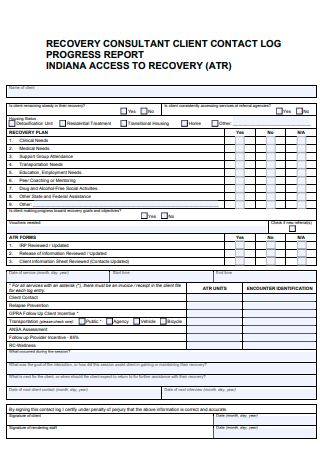
Recovery Consultancy Client Contact Log
download now -
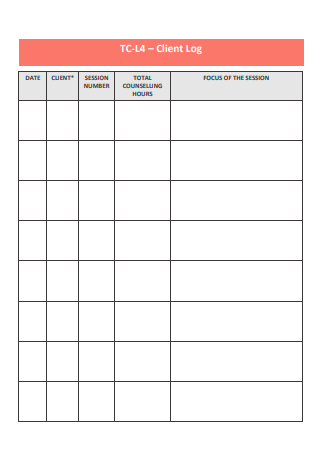
Basic Client Log
download now -
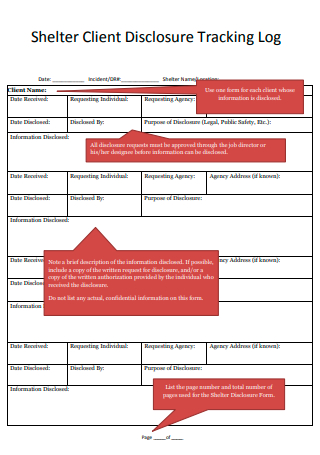
Shelter Client Disclosure Tracking Log
download now -
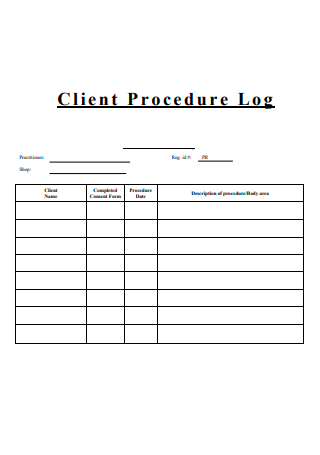
Client Procedure Log
download now -
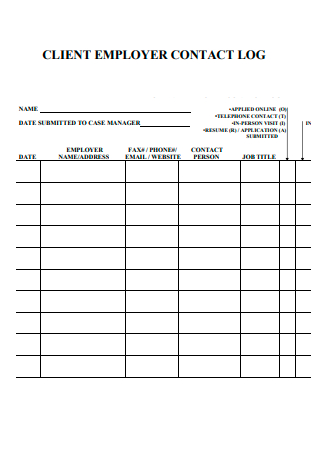
Client Employer Contact Log
download now -
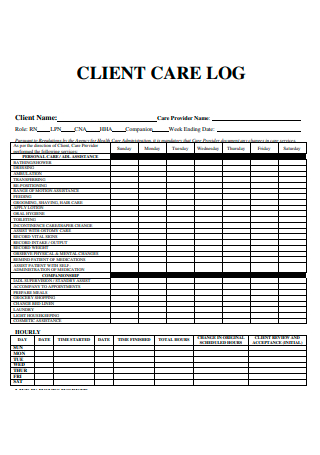
Client Care Log
download now -
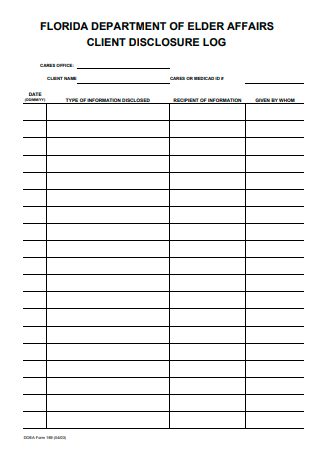
Client Disclosure Log
download now -
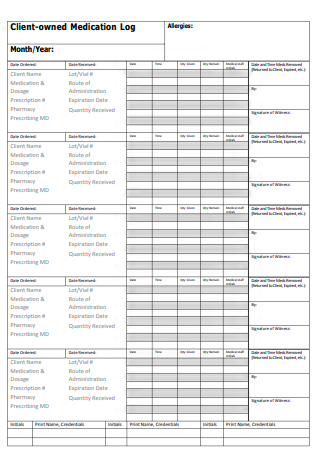
Client-Owned Medication Log
download now -
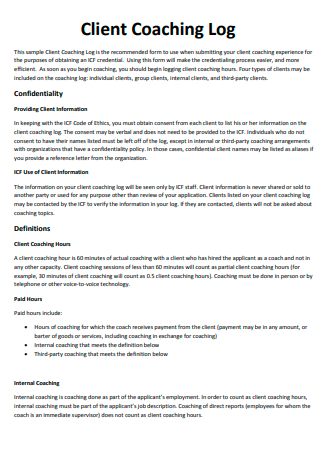
Client Coaching Log
download now -
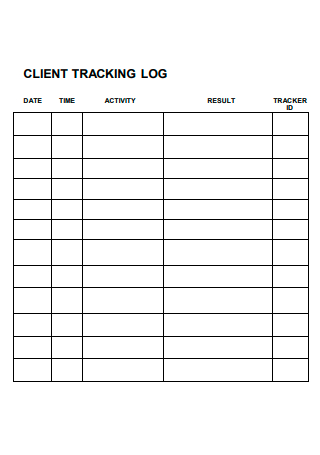
Client Tracking Log
download now -
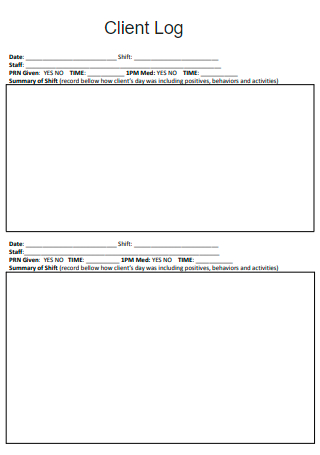
Client Log Example
download now -
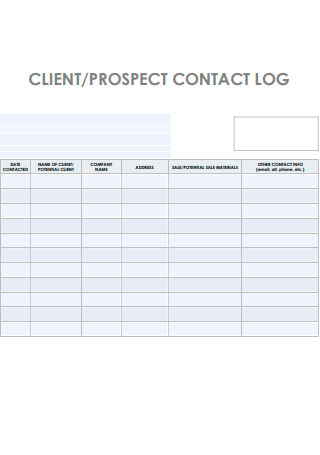
Client Contact Log
download now -
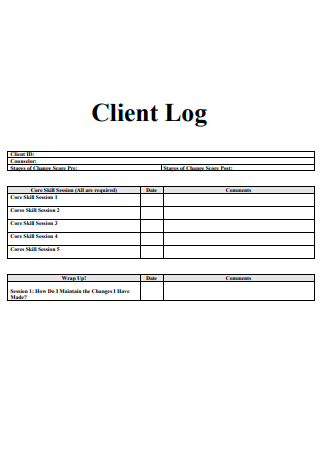
Formal Client Log
download now -
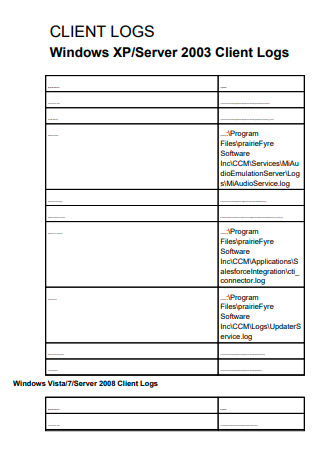
Standard Client Log
download now -
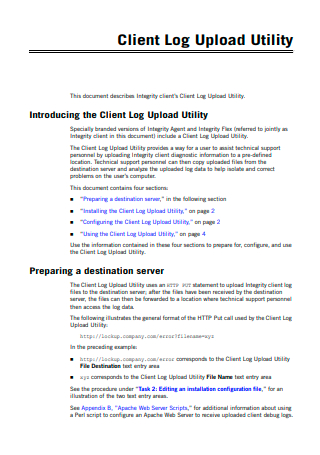
Client Log Upload Utility
download now -
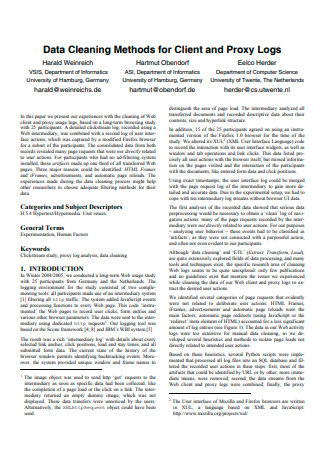
Data Cleaning Methods For Client and Proxy Log
download now
FREE Client Log s to Download
16+ SAMPLE Client Log
What Is a Client Log?
Why Are Client Logs Important?
The Different Types of Client Logs
Know Your Client: Standard Client Log Elements
How to Make an Effective Client Log
FAQs
Where are SCCM client logs located?
What is a configuration log?
What are Citrix logs?
What Is a Client Log?
A client log contains important information about your client and customer list. It is an official record used for various purposes concerning clients such as registering every client complaint call, tracking client spending habits, monitoring customer sales, and logging updated client contact information. And how you make a proper client log all depends on what function/s you need the client logs for.
Why Are Client Logs Important?
They say that putting clients first will help you know them better. And you can also display how much you value your clients by making a log specifically for their details. So why else is a client log important for companies? In this section, you will learn the common reasons that prove just how valuable client logs are.
Access to Basic Client Information
Every company must at least have access to client details such as the name, address, contact number, etc. Just like client information forms, their basic personal information would be recorded in the client log. So the next time you need to meet or call a client, just head on to the client log to get their contact details shortly. This also marks your opportunity to be in a good relationship with them.
Functions in Many Different Ways
Client logs are more than just creating a record of every client profile. You can use it to follow up on their complaints, track spending habits, and more. And it helps to identify the many possible uses of your client log because they affect how you design your client log later on. There is no one right way to design a client log because the client log’s purpose may differ from one company to another.
Updates Client Records Regularly
A great feature about client logs is how companies work hard to update records there on a regular basis. Nobody wants to depend on an outdated information sheet anyway because a client’s contact number may change, for example. And if you have new customers, you have to log them into the client log too. So be sure to review how updated the details in the log are.
Benefits Researches and Analysis Reports
All the records inside client logs won’t be taken for granted when you eventually use them for future analysis reports and research. For example, you can research client engagement by comparing how clients work with your business from the last five years down to the present. Also, you may analyze how many clients you have gathered over the years and how they affected your business.
The Different Types of Client Logs
It has already been reiterated that client logs have many possible functions. And each function actually helps you identify what type of client log you have. So if you are wondering what the types of client logs are, this section is your guide.
Know Your Client: Standard Client Log Elements
What makes up a client log? Now that you have an idea of the many possible types of client logs, it is time to familiarize what common elements are found among standard client logs. Generally, client logs contain the following elements:
Title and Company Details
The first half of the client log would be the introductory details. This is where you input the title that which is called a client log. Also, write the company’s basic information such as the company name, address, contact details, business logo, and employer branding. This part proves which company the client log belongs to.
Date Logged
The date logged is the complete date or schedule you inputted specific details into the client log. So the moment you add another client datum into the client log, be sure to write the date of when you logged it. That way, it will be easy to tell if the information written is new or still outdated. In some client logs, the data are arranged according to the dates logged in the document.
Client Information
Of course, the client log would not be complete without the standard client information. This part is like writing down the official roster of customer list your company has. And you would enlist each client according to their name, contact details, and other ID information. Remember that this set of information is the most crucial part of a client log.
Type of Client Log
To confirm what your client log is used for, write a brief description of what type of client log it is. From tracking logs, follow-up logs, to call logs, being specific about your client log helps narrow down what details must be recorded there. If you want a hybrid that contains many types of client logs in one document, just be sure you know how to organize and present your details clearly.
Additional Notes
Lastly, incorporate extra space for possible notetaking. The additional notes section can be used to write last-minute client information or any additional detail that isn’t a standard part of a client log yet still important. The thing with notes is you never know when you might need them so just leave a blank space for them.
How to Make an Effective Client Log
Whether you go for a printable client log or an online client log spreadsheet, it doesn’t matter which format you prefer as long as you know what details to input in the log and how to create it properly. So without further ado, these are the steps you need to observe in making an efficient client log:
Step 1: Determine Your Client Log’s Purpose/s
Why do you need to create a client log in the first place? Identify your client log’s purpose/s to clarify what type/s of client logs you need to make. Also, you will have an idea as to what set of details must be logged in the client log when you already have goals set ahead. So if your purpose statement for the client log is to input client call or contact log, then be sure your client log is designed to work that way and not just to write other client data.
Step 2: Leverage a Sample Client Log Template
Making client logs has never been easier with sample templates in the picture. Just choose from any sample in the list of client log templates posted above this article and edit your preferred template after. Then, you can personalize your client log according to your preferred type may it be to morph the log into a general client prospect log, SCCM client log, customer logbook, client tracking log, or any other example.
Step 3: Insert the Standard Elements
From the title, company details, down to notes, be sure you have added the important elements of a client log in your document. Labeling the parts of your client log is essential to clarify what must be inputted and what must not be written there. And if you wish to add more elements to your client log, it is certainly possible as long as they still fit your client log’s purpose or are still relevant to the information required there.
Step 4: Observe an Easy-to-Follow Client Log
Don’t forget to create a client log that is easy to read or follow. The key is to organize your details by adding visual organizers such as tables, graphs, and charts in presenting details. Or, you insert bullets and numbered lists to enumerate every client in the log. Nonetheless, improve the presentation and readability of your client log for it to pay off. Also, you can benefit by being specific with the information and getting rid of unnecessary details.
Step 5: Update the Log Regularly
Conduct constant evaluations of your client log and be sure to update it on a regular basis. The last thing you want to do is to write outdated details in the log. That alone ruins the purpose of your client log which is to input up-to-date client data. So be wary of those changes and that you aim for an error-free client log no matter what. That way, you can depend on the client log continuously.
FAQs
Where are SCCM client logs located?
In standard, SCCM client logs or files are located in the %WINDIR%CCM/Logs folder.
What is a configuration log?
A configuration log is an official log you need to display site configuration changes and managerial activities in the database.
What are Citrix logs?
Citrix logs are the collected data logs used by admins to recognize and resolve configuration problems.
Do you know what’s worse than getting client complaints? Not knowing how to track and follow up on those concerns. It only makes sense for standard customer relationship management (CRM) to prepare logs specifically for clients and customers, especially when these clients are a big asset to the company. Businesses eventually fall apart without a solid client base. Hence, maintaining positive client relations and aiming to obtain new clients from time to time will help your business thrive. And you can do that by constantly updating your client logs using premade samples for reference. Download a template now!
